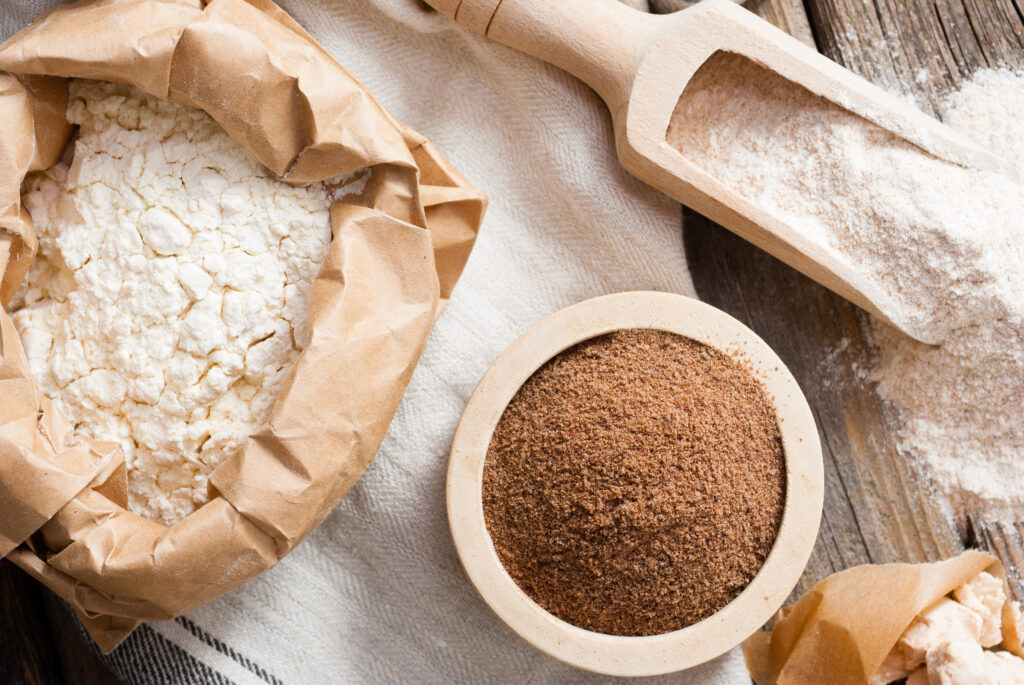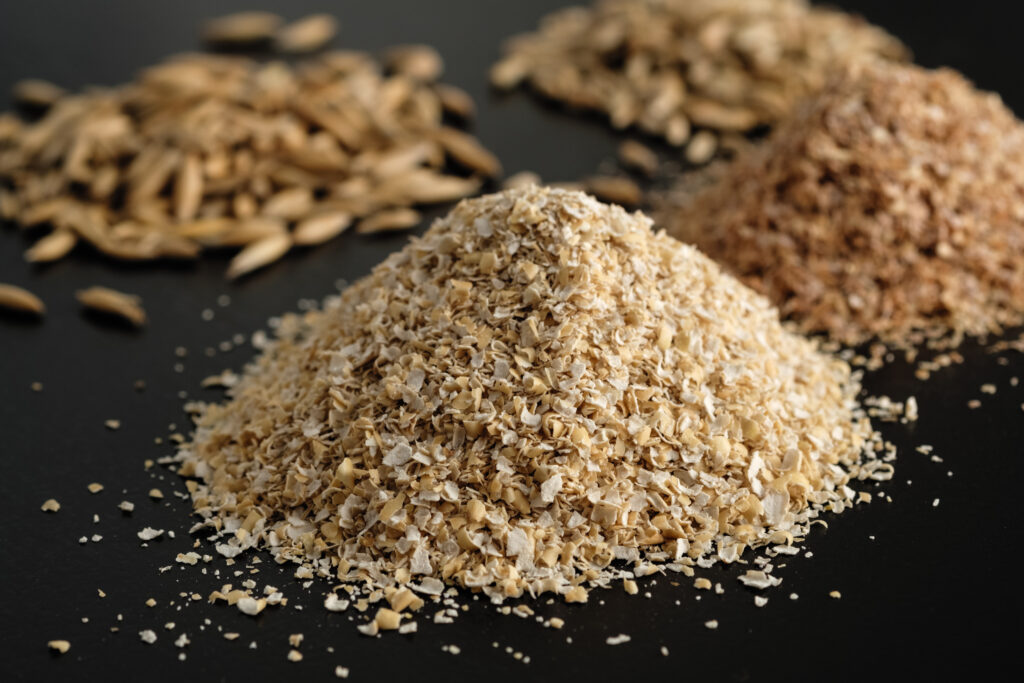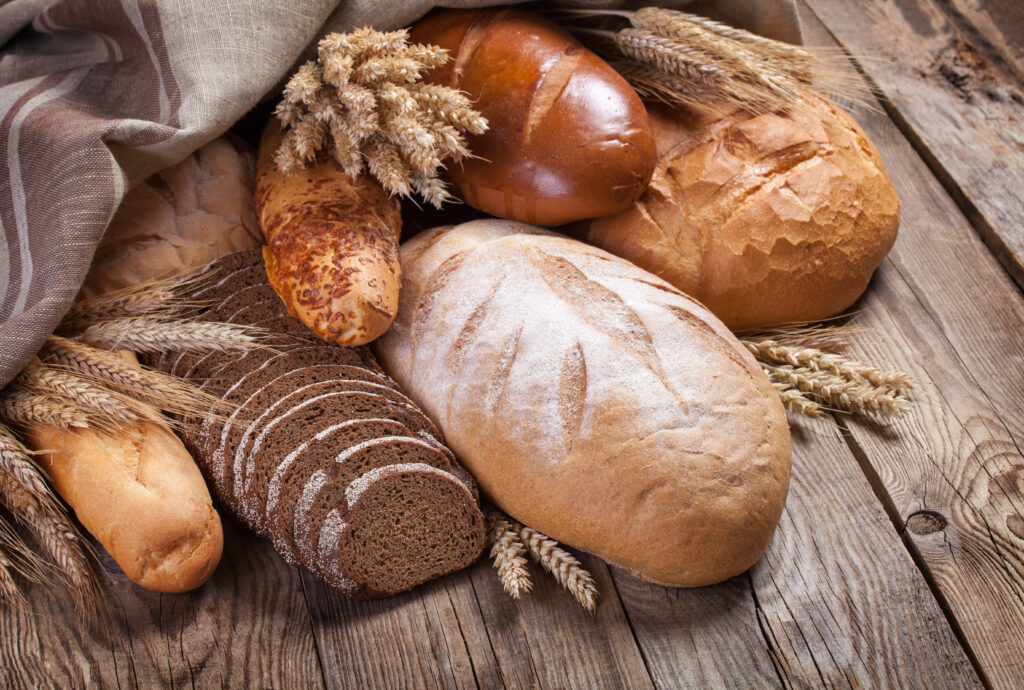
Whole Wheat Flour
Whole Wheat Flour is one of the most staple pantry items. From Roti to baked goods, a huge variety of foods involves Whole Wheat Flour. Hence, even if you like it or not, you will certainly find it in your pantry.
Although the general term for it is Whole Wheat Flour, people in the UK refer to it as Wholemeal Flour. Technically, the Whole Wheat Flour refers to a powdery substance, derived by grinding the Whole Wheat grain or wheatberry. Mostly, people use it to make baked goods, such as bread and buns.
Some manufacturers use Whole Wheat Flour to combine with the lighter flours (bleached or unbleached). It is to restore the nutrients of the flour lost in the bleaching process.
Well, there is a lot to talk about the processing, but today’s blog is about the Whole Wheat Flour. So, without further delay, let’s dive into details!
Whole Wheat Flour vs White Flour
White wheat flour and whole wheat flour differ from one another mainly in terms of nutrition. Since whole wheat flour does not get as much processed as white wheat flour, it possesses greater nutritional value.
Generally, equal quantities of both types of wheat flour will provide you with equal amounts of calories. However, whole wheat will nourish you with more fiber as compared to white wheat. Hence, it will improve your digestive health and performance. The latter will keep constipation away and also provide you with loads of vitamins and minerals.
On the contrary, white wheat flour isn’t as preferable because not only does it lack the natural nutrients of flour, but it is also often treated with bleaching agents to make it super-white. Although it enhances the looks, it depletes its nutrition substantially. Thus, one must purchase white wheat flour with caution and care. Check its chemical composition or nutritional value in detail before you buy the wheat from the store.
There’s a slight difference in the taste of both kinds of wheat flour as well. The whole wheat flour has a rather nutty taste, while the white wheat flour has a milder flavor and paler color.
If you happen to be wondering whether they can be used interchangeably or not, then you should know that it all depends on the recipe! As mentioned earlier, both have slightly differing tastes, and hence, slightly differing textures. Consequently, both of these are not always suitable for every recipe!

How to make Whole Wheat Flour at Home
In the former times, people used to take wheat beans straight to their trusted Chakki-Wala and get themselves finely ground wheat for a reasonable price. But today, the trend has become almost obsolete.
Nowadays, we find it easier to get ourselves almost anything and everything that we want from supermarkets. The same is the case when purchasing whole wheat flour. We search for the best brand and get ourselves the quantities we desire.
Although this newly-found practice has maximized ease and comfort, it has also made compromises on quality and price. The company-ground wheat products only provide you with half the quantity of what you could have got in actuality. Plus, to increase the quantity and appearance of their products, they often make use of chemicals and artificial materials, which depletes the quality substantially.
Hence, a smart way of obtaining the wheat flour is to ground it in your very own kitchen. Just purchase soft wheat beans from wholesalers or the marts at the beginning of the month, ground them in blenders that are compatible with wheat blending, and store this finely ground wheat in airtight jars. Not only would it be super-affordable, but it will also provide you with nutrient-rich whole wheat flour. It will cut down the costs of going to the marts only to get this basic pantry ingredient.

Dealing with Whole Wheat Flour
As mentioned earlier, Whole Wheat Flour has a nutty flavor when compared to the usual all-purpose flour. Also, it is a relatively healthier option, which is why health-conscious bakers can’t help but substitute all-purpose flour with a better alternative.
However, this replacement involves tackling a few problems. After all, we want the baked goods to look and taste scrumptious, don’t we?
You see, Whole Wheat Flour has the complete wheat grain, including the bran and the germ. Thus, it consumes all the moisture while baking and makes the resultant product dry. Also, the texture is hard and flaky.
So, how to solve this problem? Well, the solution lies in letting the batter rest for at least 10-15 minutes before baking. It allows the bran as well as the germ to hydrate without producing those hard and dry baked goods. Or, you can use the other way round and let the baked goods rest overnight before serving.
Leave your comment
You must be logged in to post a comment.